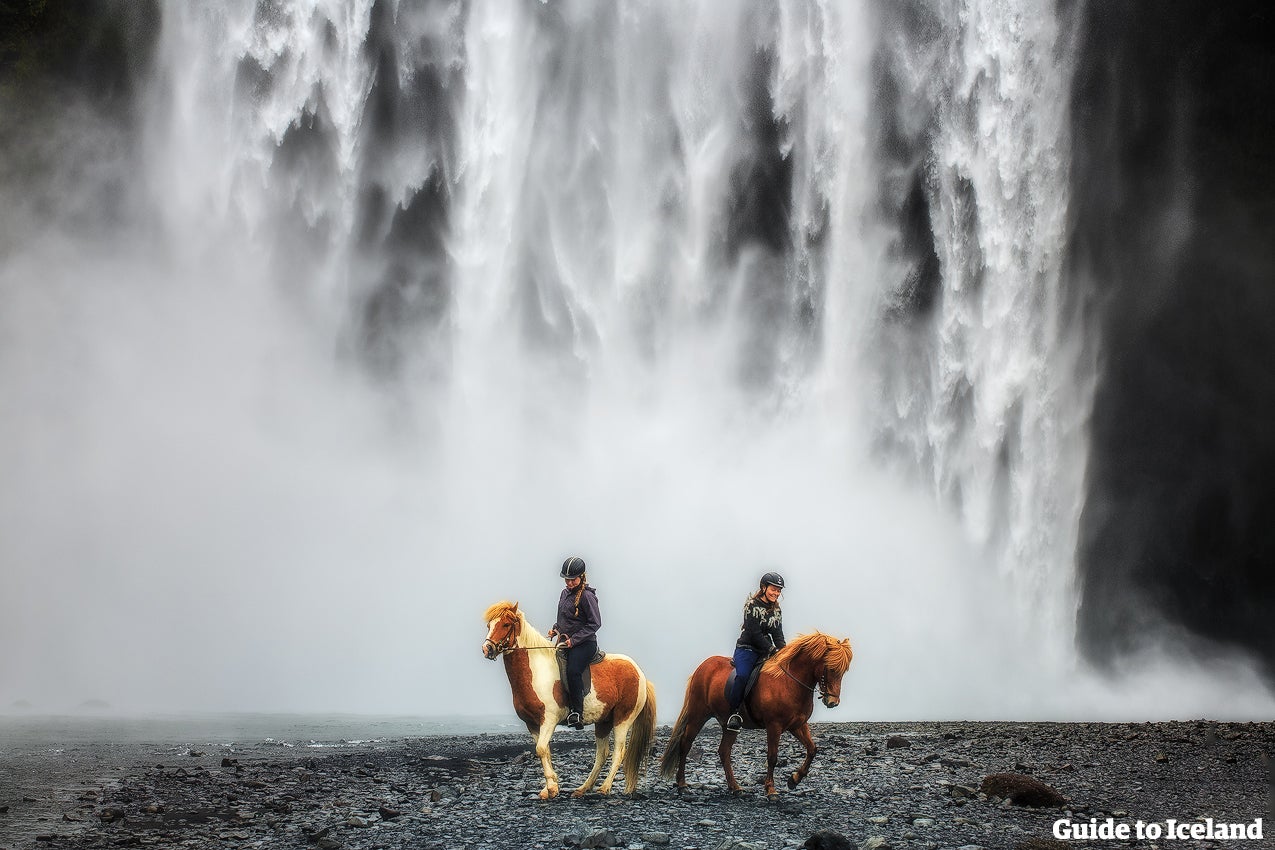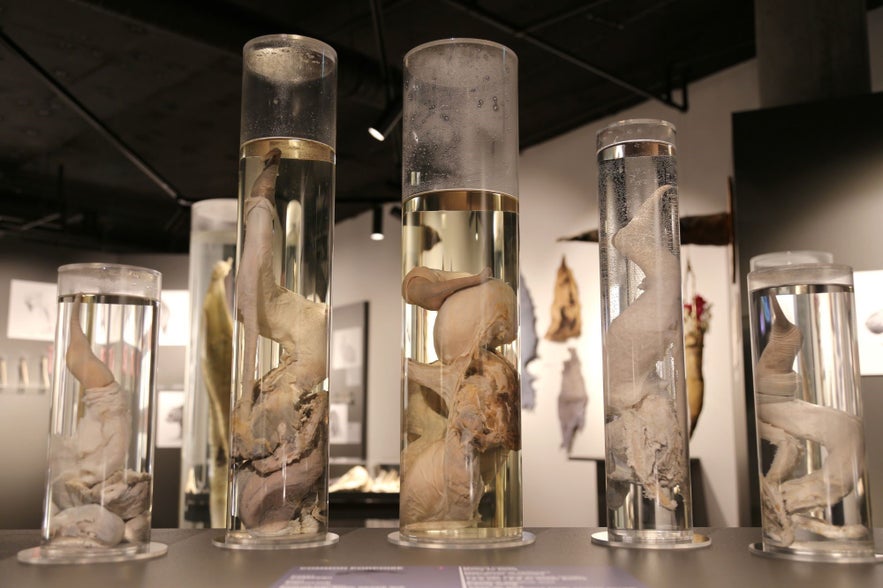
Where are Iceland’s strangest collections, exhibits, and museums, and what oddities and curiosities do they have in store for guests? Read on to find out all there is to know about the top 10 weirdest museums in Iceland.
Every country has historical and cultural locations loved for the sheer novelty of their existence... and Iceland is no exception! While the landscapes and outdoor adventures often take center stage, Iceland’s unusual museums offer a fun and unexpected twist to your travels.
Why You Can Trust Our Content
Guide to Iceland is the most trusted travel platform in Iceland, helping millions of visitors each year. All our content is written and reviewed by local experts who are deeply familiar with Iceland. You can count on us for accurate, up-to-date, and trustworthy travel advice.
These quirky museums draw you in with their strange, fascinating exhibits that leave you both intrigued and bewildered. For a small country, Iceland has a surprising number of these unique museums, adding a very different flavor of entertainment to any trip around the country.
Admission to museums and exhibitions in Iceland varies, but they’re generally an affordable and easy addition to your itinerary and well worth the experience. Some of these are in or around Reykjavik, but many are located in small towns in the countryside, so renting a car is essential to reach some of them. As you plan your self-drive tour, consider choosing a nearby Iceland accommodation to make the most of your visit to these quirky spots.
Read on to learn about the top weirdest museums you should visit during your trip and enjoy discovering the weird and wonderful side of Iceland!
- Learn more about the Top 12 Art Museums and Galleries in Reykjavik
- Make sure to visit the Top 10 Museums in Reykjavik
- You'll also want to include visits to the Best Museums in Iceland!
The Weirdest Museums in Iceland
These attractions cover everything from interesting history and nature to strange folklore and art. Make sure to include these unique, strange, and weird museums in your Iceland itinerary for a fun cultural twist to your trip!
10. Ystafell Auto Museum - North Iceland
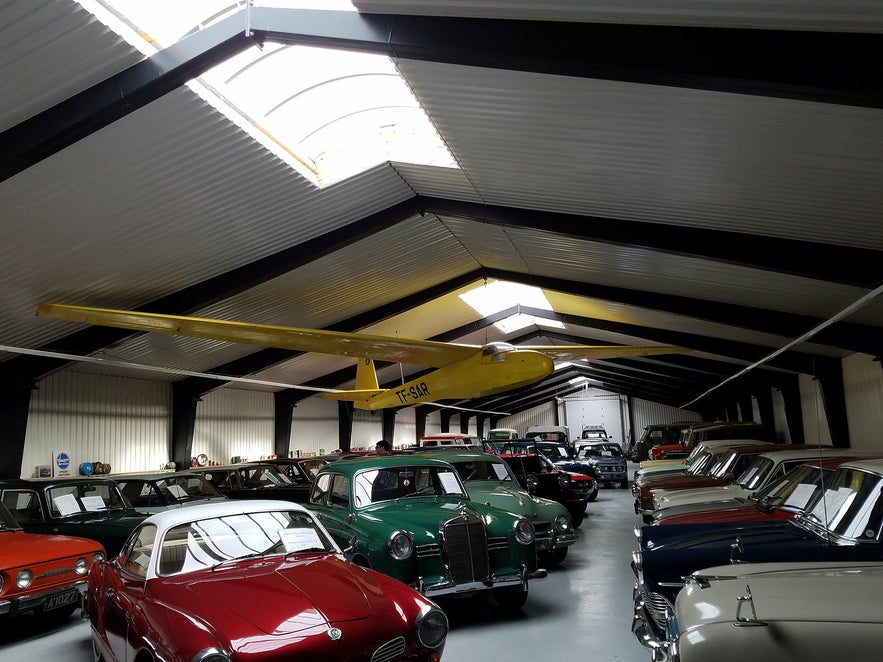 Photo from Wikimedia, Creative Commons, by Coolsteve11. No edits made.
Photo from Wikimedia, Creative Commons, by Coolsteve11. No edits made.
Just a 30-minute drive from Husavik, the best place to go whale watching in Iceland, lies the Ystafell Transportation Museum. This quirky open-air museum features over 50 years of automotive history. It’s the oldest and largest collection of antique cars in Iceland, making it a must-see for car enthusiasts and curious travelers alike.
The reason this museum has a place on this list is not just that it's in the middle of nowhere but because you'll find everything from repurposed tanks that were once used for delivering milk and snowmobile buses that appear straight out of science fiction! They're displayed alongside a treasure trove of vintage car parts and historical artifacts.
This unique collection began with Sverrir Ingólfsson, a local mechanic whose love of cars led to an enormous collection assembled over his lifetime. It's open for visits between mid-May to September, which is the best time to explore North Iceland. You can also visit outside that time frame, but you’ll need to contact the museum ahead of time to arrange a visit.
- Check out Driving in Iceland: The Ultimate Guide to Road Trips
- See also: Best Guide to Rental Car Sizes in Iceland
9. Icelandic Sea Monster Museum- Westfjords
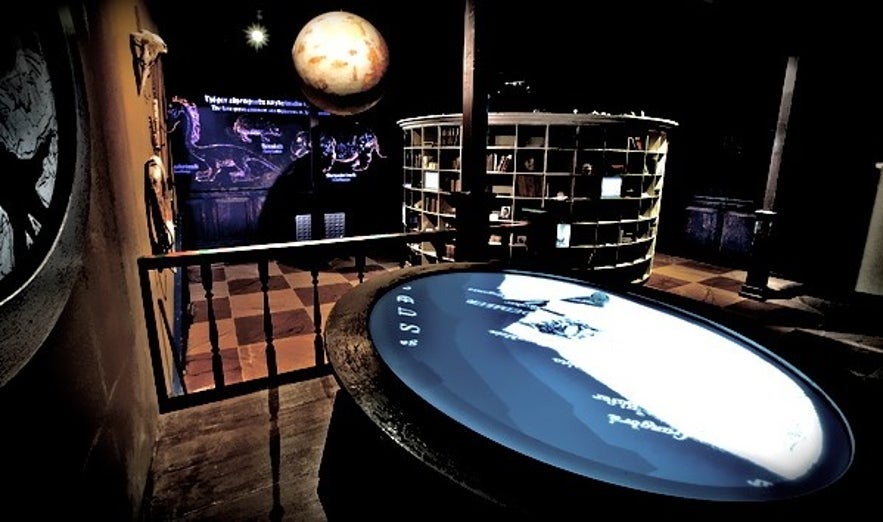
Photo from the Icelandic Sea Monster Museum
If you're fascinated by the mythical creatures of Icelandic legend, the Icelandic Sea Monster Museum in the Bildudalur fjord should be on your list. This museum in the Westfjords is dedicated to the sea monsters said to haunt the waters around Iceland, blending local lore with a bit of mystery.
Inside, you'll find interactive exhibits featuring old maps, firsthand accounts, and detailed illustrations of the sea monsters that have fueled centuries of Icelandic folklore. You'll get to know tales of creatures from the surrounding landscapes, making you look at the region differently.
The Sea Monster Museum is a two-hour drive from Isafjordur, the largest town in the region. It's a perfect stop for those on summer self-drive tours in the Westfjords, adding a fun and unique way to learn about local culture. It's a must-visit for folklore fans and curious travelers!
8. Sigurgeir's Bird Museum - Lake Myvatn
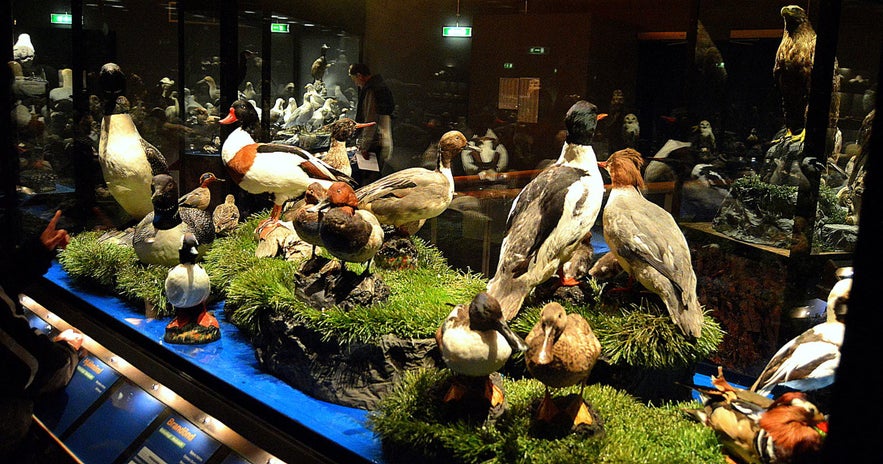 Photo by Regína Hrönn Ragnarsdóttir
Photo by Regína Hrönn Ragnarsdóttir
Sigurgeir's Bird Museum honors the legacy of bird enthusiast Sigurgeir Stefánsson, who passed away in 1999. He had begun transforming a small shack into what he hoped would be his dream museum, hoping to find a larger housing one day, but it was his family who finally brought this vision to life in 2008 after his passing.
The Bird Museum is now in a spacious modern building along the shores of the incredible Lake Myvatn and a 45-minute drive from Husavik. It's a great stop for bird lovers and those interested in the surrounding nature. A particularly unique feature is the glass floor at the entrance, where visitors can peer down at fish swimming below.
Iceland has long been a hotspot for birdwatching, with species like the iconic Atlantic Puffin calling it home during the summer months. In fact, Iceland boasts the largest breeding colony of these adorable seabirds in the world!
Interestingly, while the Atlantic Puffin is a favorite among locals and visitors alike, Iceland’s national bird is the Gyrfalcon, a majestic bird of prey. Visitors to the museum can learn more about them and enjoy a deeper dive into Iceland’s rich birdlife.
- Learn all about Birds in Iceland and Where to See Puffins in Iceland
- See also: The Sigurgeir's Bird Museum at Myvatn - Breeding Birds in Iceland
7. Petra's Stone Collection - East Iceland
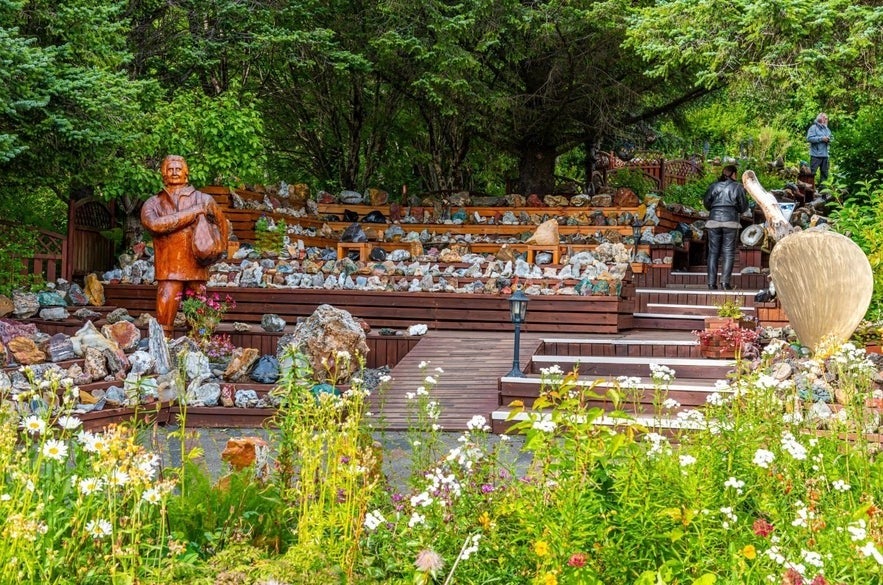
Petra’s Stone Collection is exactly what it says on the tin, but also so, so much more. Set in a picturesque garden with stunning views of a nearby mountain, it features a fascinating rock and mineral collection started in 1946 by local woman Ljósbjörg Petra María Sveinsdóttir, who was usually called Petra.
Most of the stones were found in the Stodvarfjordur fjord, where the collection is located, and other parts of East Iceland. Petra opened her home to visitors in 1974, and it quickly became one of the region’s most popular attractions.
Since 2015, visitors can also enjoy hot drinks, sandwiches, and soup at the museum’s café, Kaffi Sunnó, open from June to September. The museum is open from May 1st to October 15th.
- Petra's Stone Collection is one of the Best Places to Visit in East Iceland
- See also: Best Restaurants in East Iceland
6. Library of Water - Snaefellsnes Peninsula
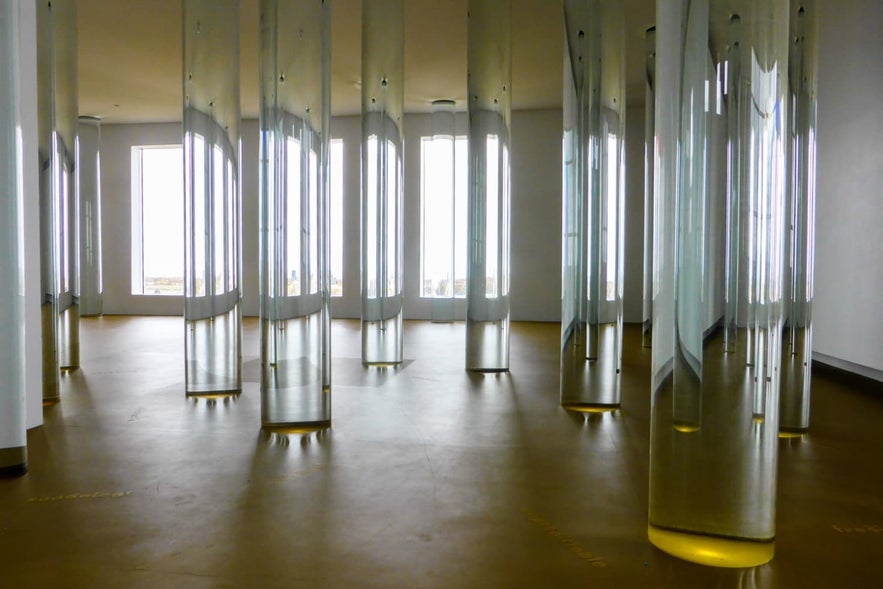
Photo from Visit West Iceland
This long-term project, overseen by American visual artist Roni Horn, has been located in the coastal town of Stykkisholmur on the Snaefellsnes peninsula since 2007. Overlooking both the ocean and town, the Library of Water reflects Roni Horn's relationship with Iceland’s culture and nature over the years.
The exhibition space showcases twenty-four columns filled with water from various Icelandic ice caps. Light reflects and refracts through these columns, creating patterns across a floor embedded with Icelandic and English words. This makes the mood of the exhibit change depending on the weather outside on any given day.
If you plan to stay in accommodations in Stykkisholmur and find yourself strolling through the streets of this charming town, it's worth a stop if you're in a contemplative mood. You'll also get to enjoy some nice views over the town!
- Check out the 6 Facts You Didn't Know About Icelandic Water
- See also: Top 16 Things to Do on the Snaefellsnes Peninsula
5. Samúel Jónsson's Art Museum - The Westfjords
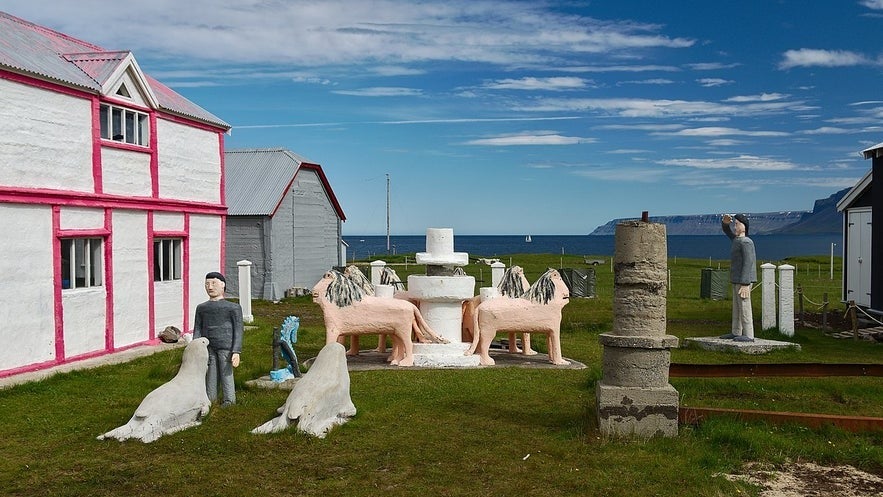
Photo from Wikimedia, Creative Commons, by Rob Oo. No edits made.
The farm of folk artist Samúel Jónsson (1884-1969) is likely one of the most unique art museums you'll ever see. The farm is located in Selardalur valley on the tip of the Arnarfjordur fjord in the Westfjords, and it's an incredible sight among the remote landscape.
Though Samúel spent his life as a farmer, he was passionate about art from an early age. His farm is filled with his unique sculptures of animals and people, and even a recreation of Spain's famous "Patio de los Leones" lion fountain, along with a small church he built himself.
The Samúel Jónsson art farm is a 40-minute drive from the nearest town, Bildudalur, which is also home to the Sea Monster Museum. It's well worth the trip for a one-of-a-kind cultural experience!
- Discover the Ultimate Guide to the Westfjords of Iceland
4. The Icelandic Punk Museum - Reykjavik

The Icelandic Punk Museum is located in a renovated public bathroom at the bottom of Reykjavik’s major shopping street, Laugavegur. As the name implies, it's dedicated to the cultural influence of the punk movement in Iceland and is a very interesting stop while exploring the downtown area.
During the early 1980s, Icelandic punk music made a cultural impact that has rarely been felt since. Anti-establishment, deliberately raw, full of anarchistic anger and fresh creative energy, the movement would go on to birth some of the country’s biggest future stars, including the world famous Björk.
Stepping into the small space, you'll have the chance to read display boards and ripped papers lathered to the cubicle walls, as well as listen to the biggest bands of the era, such as Purrkur Pillnikk and K.U.K.L. If you're lucky, you may even have the chance to catch intimate guitar concerts during celebratory events in Reykjavik!
- Learn more about Music in Iceland
3. The Sundry Museum - North Iceland
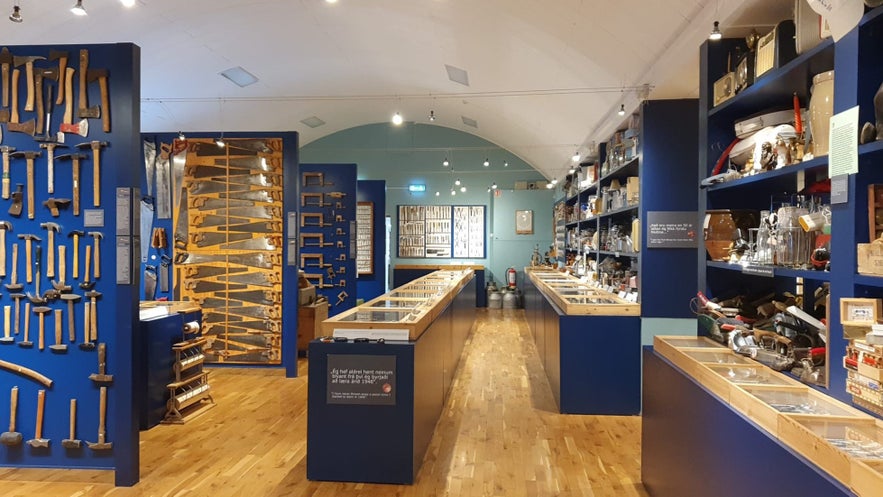
Photo from Smámunasafn Sverris Hermannssonar
The Sundry Museum, known in Icelandic as "Smámunasafnið," is not focused on one particular object but rather a collection of all sorts of everyday items that seemingly have no relationship to one another.
This is the vast collection of Sverrir Hermannsson (1928-2008), a master carpenter who seemingly never threw away any item he acquired throughout his life. Sverrir spent much of his career maintaining and rebuilding old homes around Akureyri, Iceland’s unofficial "Capital of the North." Throughout his life, he was always looking for items others might have considered “junk” for his growing collection of odds and ends.
The Sundry Museum is roughly a 30-minute drive from Akureyri in North Iceland, and it's open for visits over the summer months. It's an interesting stop if you're staying in accommodation in Akureyri, and it's easy to reach with a cheap rental car.
- Visit the 11 Must-See Destinations in North Iceland
- Learn about the 13 Best Things to Do in Akureyri (and Nearby)
2. The Museum of Icelandic Sorcery & Witchcraft - The Westfjords
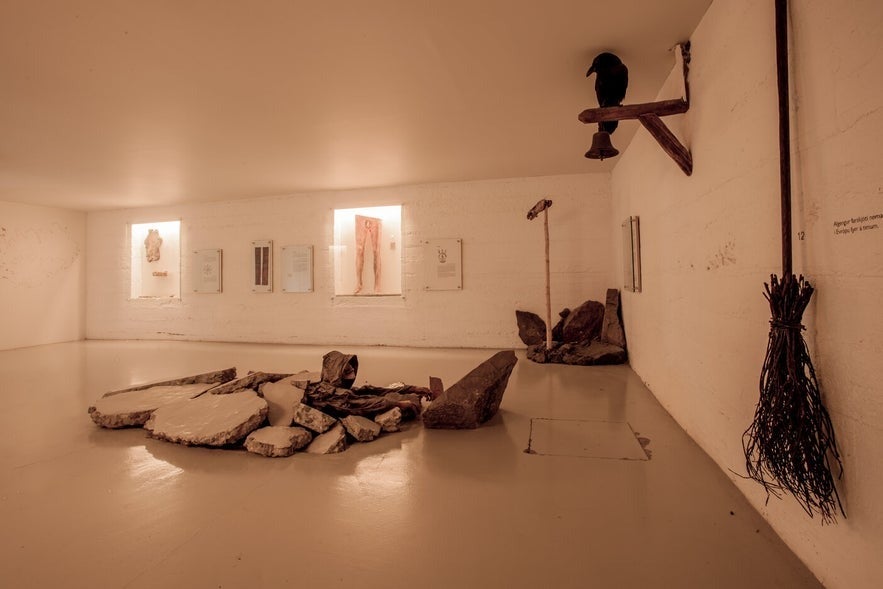
Overall, Icelanders have a penchant for believing in unseen forces: witchcraft and wizardry, trolls and ghosts, precognitive abilities, curses, rune spells, and more. All have their place in the famous Icelandic Sagas and have been featured in folk tales for centuries!
This is why the Museum of Icelandic Sorcery and Witchcraft is a fascinating place to visit, located in the town of Holmavik in the Westfjords. The museum attracts over 15,000 visitors each year who are interested in the magic and rituals that have made the Westfjords famous as a center for spellcraft in Iceland.
Particular highlights at the witchcraft museum include detailed rune cravings and a full scale replica of the infamous “necropants,” which are trousers made from the stripped skin of a man’s legs and genitals, used by witches and sages as a source of unlimited wealth. You'll also discover the real-life stories of those who have been accused and sentenced for the crime of witchcraft in Iceland, so it's a must-visit for those interested in the supernatural side of history!
- Check out Folklore in Iceland
- Learn more: The Museum of Icelandic Witchcraft and Sorcery at Holmavik in the Westfjords
1. The Icelandic Phallological Museum - Reykjavik
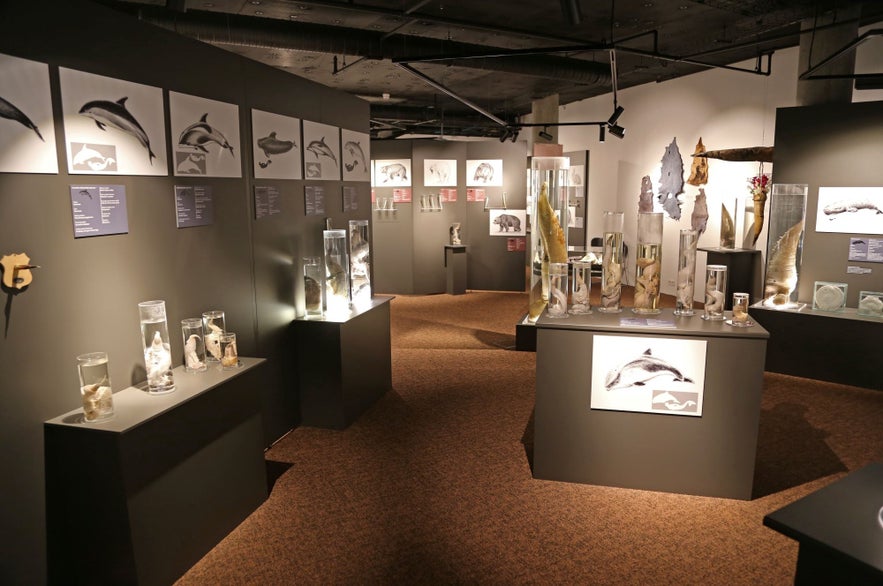 Have you ever wanted to compare the penises of various Icelandic wildlife species, including seals, sperm whales, and members of the Icelandic National Handball Team? Then you're in incredible luck, as the Icelandic Phallological Museum in Reykjavik has you covered!
Have you ever wanted to compare the penises of various Icelandic wildlife species, including seals, sperm whales, and members of the Icelandic National Handball Team? Then you're in incredible luck, as the Icelandic Phallological Museum in Reykjavik has you covered!
It's likely the most famous museum on this list, and we think it's pretty self-explanatory why it deserves the top spot. The "Penis Museum" originally opened in 2004 with the private collection of historian Sigurður Hjartarson, which included 62 specimens. After a brief move to Husavik, Hjartarson’s son, Hjörtur Gísli Sigurðsson, brought the museum back to Reykjavik in 2011, where it has remained since.
The Phallological Museum is now home to over 100 specimens from all over the world, and it has become an unmissable stop for travelers to Reykjavik. It's in the Hafnartorg shopping area by the Reykjavik harbor, a less than 5-minute walk from the Harpa concert hall, so make sure to stop by while in Reykjavik!
- Learn more about the Icelandic Phallological Museum
- See also: Top 14 Things to Do in Reykjavik
Which of these weird museums would you most like to visit? Have you visited any of them before? Are there any strange spots that we missed that deserve a mention? Share your thoughts and experiences in the comment section below!



